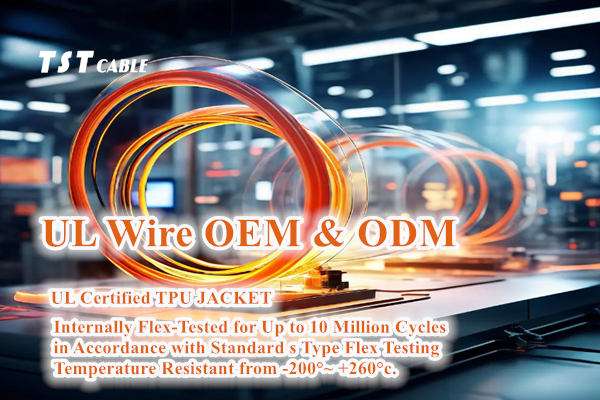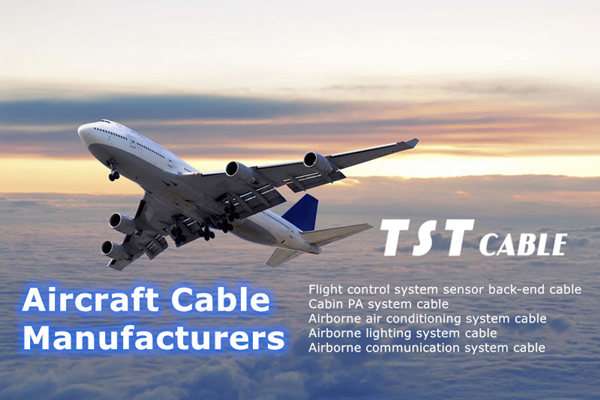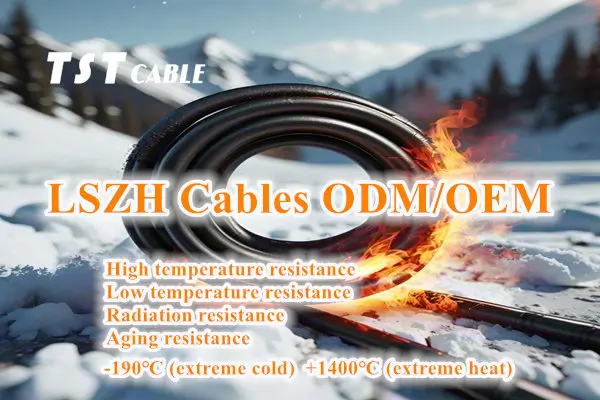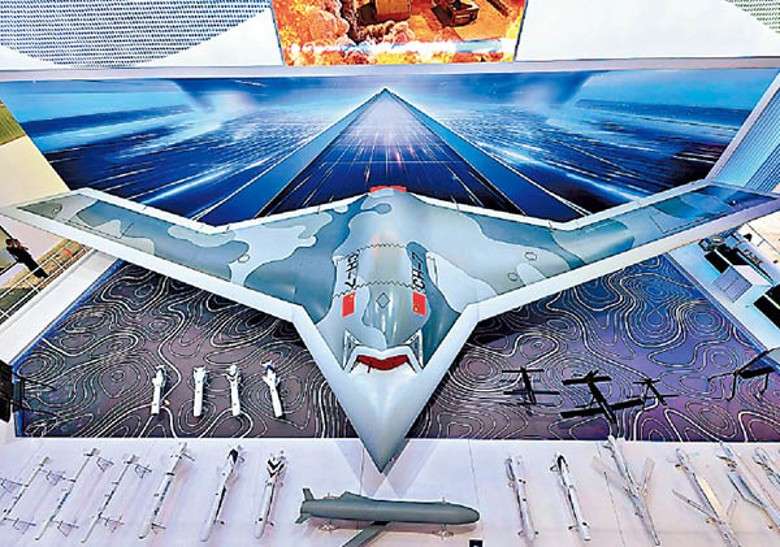UL Wire Low Smoke Zero Halogen Cable Introduction

People often say that water and fire are merciless. Since humans discovered fire, fire has not only accelerated the development of human civilization, but also brought destruction to human civilization. How many ancient civilizations were destroyed by fire. Similarly, fire can also burn the integrated wiring system and interrupt power transmission. At the same time, if the cable produces a large amount of toxic gas and smoke during the combustion process, it will have a great impact on the escape of personnel and even become a hidden danger to safety.
Wires and cables are also called the “arteries” and “nerves” of the national economy. They are indispensable basic equipment for transmitting electrical energy, transmitting information, manufacturing various motors, instruments, and meters, and realizing electromagnetic energy conversion. They are essential basic products in the future electrification and information society.
Low Smoke Zero Halogen Wire and Cable (LSOH/HSZH, Low Smoke Zero Halogen) is a wire and cable that produces very little smoke and does not contain halogen in the event of a fire. It meets UL standards, which helps reduce the emission of harmful gases and improves safety in fires.
The manufacturing of low-smoke halogen-free wires and cables is completely different from the production methods of most electromechanical products. Electromechanical products usually use parts to assemble into components, and then assemble multiple components into a single product, and the products are measured in units or pieces. Wires and cables are measured in length. All wires and cables start with conductor processing, and insulation, shielding, cabling, sheathing, etc. are added layer by layer on the outer periphery of the conductor to make wire and cable products. The more complex the product structure, the more layers are superimposed.
I. Process characteristics of LSOH/LSZH wire and cable product manufacturing:
- Long-length continuous superposition combination production method
The long-length continuous superposition combination production method has a global and controlling impact on wire and cable production, which involves and affects:
(1) Production process and equipment layout
The various equipment in the production workshop must be reasonably arranged according to the process flow required by the product, so that the semi-finished products at each stage can flow in sequence. Equipment configuration should consider different production efficiencies and balance production capacity. Some equipment may need to be configured with two or more units to balance the production capacity of the production line. Therefore, the reasonable selection and combination of equipment and the layout of the production site must be balanced and comprehensively considered according to the product and production volume.
(2) Production organization and management
Production organization and management must be scientific, reasonable, thorough, accurate, strict and meticulous. Operators must strictly follow the process requirements. Any problem in any link will affect the smooth process flow, product quality and delivery. Especially for multi-core cables, if a certain line pair or basic unit is short or has quality problems, the entire cable will be insufficient and scrapped. On the contrary, if a unit is too long, it must be sawed off and waste is caused.
(3) Quality management
The production method of long-length continuous superposition and combination means that any problem in any link or instant in the production process will affect the quality of the entire cable. The more quality defects occur in the inner layer and are not discovered in time and production is terminated, the greater the loss will be. Because the production of wires and cables is different from assembled products, which can be disassembled and reassembled and replaced with other parts; quality problems in any component or process of wires and cables are almost irreparable and irreparable for this cable. The subsequent treatment is very negative, either sawing it short or downgrading it, or scrapping the entire cable. It cannot be disassembled and reassembled.
The quality management of wires and cables must run through the entire production process. The quality management inspection department should conduct patrol inspections of the entire production process, self-inspection by operators, and mutual inspection between upper and lower processes. This is an important guarantee and means to ensure product quality and improve the economic benefits of the enterprise.
- There are many production processes and large material flow
The manufacturing of wires and cables involves a wide range of processes, from the smelting and pressure processing of non-ferrous metals to chemical technologies such as plastics, rubber, and paints; textile technologies such as wrapping and weaving of fiber materials, to wrapping of metal materials and longitudinal wrapping of metal strips, welding of metal forming processes, etc.
The various materials used in the manufacture of wires and cables are not only of many categories, varieties, and specifications, but also of large quantities. Therefore, the amount, spare amount, batch cycle, and batch size of various materials must be verified. At the same time, the decomposition, recycling, reuse, and waste treatment of waste products are an important part of management, and material quota management and conservation are done well.
In the production of wires and cables, from the entry and exit, storage of raw materials and various auxiliary materials, the flow of semi-finished products in each process to the storage and delivery of products, the material flow is large, and it must be reasonably laid out and dynamically managed.
- Many special equipment
Wire and cable manufacturing uses special production equipment with the process characteristics of this industry to adapt to the structure and performance requirements of cable products, meet the requirements of long-length continuous and as high-speed production as possible, thus forming a series of special equipment for cable manufacturing. Such as extruder series, wire drawing machine series, stranding machine series, wrapping machine series, etc.
The manufacturing process of wires and cables is closely related to the development of special equipment and promotes each other. New process requirements promote the generation and development of new special equipment; in turn, the development of new special equipment promotes the promotion and application of new processes. Special equipment such as wire drawing, annealing, extrusion series line; physical foaming production line, etc., promote the development and improvement of wire and cable manufacturing technology, and improve the product quality and production efficiency of cables.
- Main processes of LSOH/LSZH wires and cables
Conductors of LSOH/LSZH wires and cables
The conductors of fire-resistant cables are copper conductors, the conductor geometry is circular, and multiple stranded conductors should be tightly compressed. Circular compressed copper conductors have many advantages over fan-shaped conductors: when wrapping the mica tape, the mica tape and the conductor are tightly combined, which is conducive to the uniform distribution of the electric field and enhances the electrical insulation performance of the cable. At the same time, it can save the amount of mica tape and reduce costs.
Fire-resistant layer of LSOH/LSZH wires and cables
Two or more layers of mica tape are overlapped and wrapped outside the conductor. Generally, the overlap rate is not less than 30%, and sometimes the overlap rate reaches 50% to meet the fire resistance test requirements, with the fire resistance test as the benchmark. The wrapping angle is controlled at 40-50 degrees.
Insulation and sheath of LSOH/LSZH wires and cables
Cable insulation is allowed to use cross-linked polyethylene or halogen-free low-smoke flame-retardant polyolefin insulation materials according to different flame retardant levels. Since the conductor is wrapped with two or more layers of fire-resistant mica tape, the insulation thickness of the cable with a conductor cross-section of 25mm2 or more is allowed to be thinned by 20%, but it is based on the ability to pass the fire-resistant cable test. The cable sheath uses halogen-free low-smoke flame-retardant polyolefin sheath material, and its structural dimensions are implemented in accordance with relevant standards.
LSOH wires and cables are made through three processes: drawing, twisting, and coating. The more complex the model specifications, the higher the repeatability.
- Drawing
In metal pressure processing, the metal is forced through the die (pressing wheel) under the action of external force, the metal cross-sectional area is compressed, and the required cross-sectional area shape and size are obtained. The technical processing method is called metal drawing.
Drawing process is divided into: single wire drawing and twisting drawing.
- Twisting
In order to improve the softness and integrity of wires and cables, interweaving two or more single wires in a specified direction is called twisting.
Twisting processes are divided into: conductor twisting, cabling, braiding, wire armoring and winding.
- Coating
According to the different performance requirements of wires and cables, special equipment is used to coat different materials on the outside of the conductor. Coating processes are divided into:
A. Extrusion: rubber, plastic, lead, aluminum and other materials.
B. Longitudinal wrapping: rubber, corrugated aluminum strip materials.
C. Wrapping: ribbon-shaped paper tape, mica tape, alkali-free glass fiber tape, non-woven fabric, plastic tape, etc., linear cotton yarn, silk and other fiber materials.
D. Dipping: insulating paint, asphalt, etc.
III. Basic process flow of plastic wire and cable manufacturing
- Copper and aluminum monofilament drawing
The copper and aluminum rods commonly used in wires and cables are made of one or more drawing dies at room temperature by a wire drawing machine to reduce their cross-section, increase their length, and improve their strength. Wire drawing is the first process of each wire and cable company, and the main process parameter of wire drawing is die matching technology.
- Single wire annealing
When copper and aluminum monofilaments are heated to a certain temperature, they are recrystallized to increase the toughness of the monofilaments and reduce their strength to meet the requirements of wires and cables for conductive cores. The key to the annealing process is to prevent the oxidation of copper wires.
- Conductor twisting
In order to improve the softness of wires and cables and facilitate laying and installation, the conductive core is made of multiple monofilaments twisted together. From the twisting form of the conductive core, it can be divided into regular twisting and irregular twisting. Irregular twisting is further divided into bundle twisting, concentric twisting, special twisting, etc.
In order to reduce the area occupied by the conductor and reduce the geometric size of the cable, the conductor is twisted and compressed at the same time, so that the ordinary circle is transformed into a semicircle, fan-shaped, tile-shaped and compressed circle. This kind of conductor is mainly used in power cables.
- Insulation extrusion
Plastic wires and cables mainly use extruded solid insulation layer. The main technical requirements for plastic insulation extrusion are:
4.1. Eccentricity: The deviation value of the extruded insulation thickness is an important indicator of the extrusion process level. Most product structural dimensions and their deviation values are clearly specified in the standard.
4.2. Smoothness: The surface of the extruded insulation layer is required to be smooth, and there must be no poor quality problems such as rough surface, burning, and impurities.
4.3. Density: The cross-section of the extruded insulation layer must be dense and solid, and there must be no pinholes visible to the naked eye, and no bubbles.
- Cabling
For multi-core cables, in order to ensure the molding degree and reduce the shape of the cable, it is generally necessary to twist it into a circle. The mechanism of twisting is similar to that of conductor twisting. Due to the large twisting section diameter, most of them adopt the non-back-twist method. The technical requirements for cabling are: first, to prevent the twisting of the cable caused by the turning over of the special-shaped insulation core; second, to prevent the insulation layer from being scratched.
Most cables are accompanied by two other processes during cabling: one is filling to ensure the roundness and stability of the cable after cabling; the other is binding to ensure that the cable core is not loose.
- Inner sheath
In order to protect the insulation core from being scratched by the armor, the insulation layer needs to be properly protected. The inner sheath is divided into: extruded inner sheath (isolation sleeve) and wrapped inner sheath (cushion). The wrapped cushion replaces the binding tape and is carried out simultaneously with the cabling process.
- Armoring
Cables laid underground may be subjected to a certain positive pressure during work, and an inner steel belt armor structure can be selected. When laying cables in places with both positive pressure and tension (such as in water, vertical shafts or soil with a large drop), a structure with inner steel wire armor should be selected.
- Outer sheath
The outer sheath is a structural part that protects the insulation layer of wires and cables from erosion by environmental factors. The main function of the outer sheath is to improve the mechanical strength of wires and cables, prevent chemical corrosion, moisture, water immersion, and prevent cable combustion. According to different requirements for cables, plastic sheaths are directly extruded using an extruder.
During the entire low-smoke halogen-free cable manufacturing process, it is also necessary to pay attention to quality management and environmental protection measures to ensure that the products produced are both safe and environmentally friendly. In addition, according to the different needs of specific products, some steps may be adjusted or additional processing techniques may be added.
In the pursuit of a safer and more environmentally friendly living environment, TST CABLES low-smoke halogen-free (UL wire, LSZH cable, LSOH cable) cables are becoming increasingly popular as an ideal choice for modern construction and industrial applications. TST CABLES LSOH cables are designed with fire risk reduction as the core goal. They use special non-halogenated materials as insulation and sheath, which can not only maintain structural integrity at high temperatures, but also effectively reduce the amount of smoke and toxic gas released during combustion, thereby buying precious time for personnel evacuation and ensuring the safety of life and property to the greatest extent. LSOH cables are suitable for commercial buildings, subways, nuclear power plants and other places with strict requirements on fire safety.
If you have customized low smoke halogen-free cables,LSOH cable, flame retardant cables, coaxial cables, UL cables, Teflon wires, armored wires, industrial cables, power cables, control cables and other products, and need further technical support or cable solutions, you can always send an email to the professional cable engineer of TST cable manufacturer (email: lixiangchao@testeck.com, please state your country, your industry, and your needs in the email, and we can also provide you with free samples)





